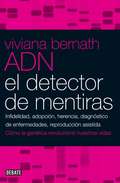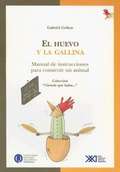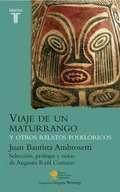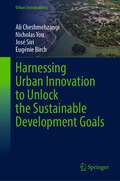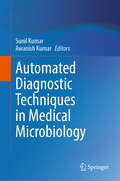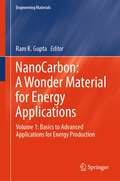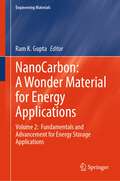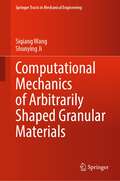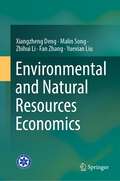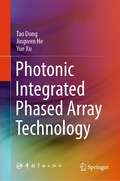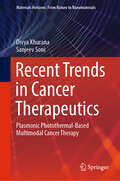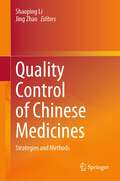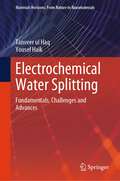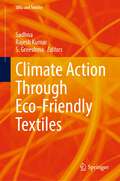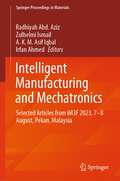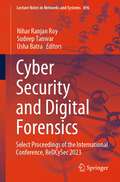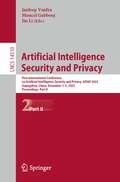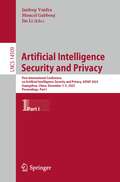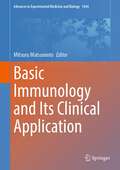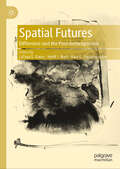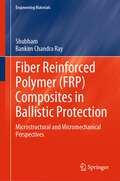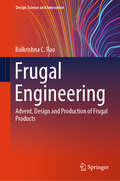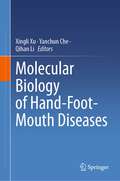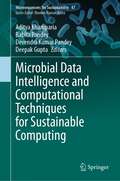- Table View
- List View
ADN. EL DETECTOR DE MENTIRAS (EBOOK)
by Viviana Bernath"A través de la investigación de casos reales, Viviana Bernath aborda, con autoridad y sencillez, un tema crucial de nuestro tiempo: el de las implicaciones psicosociales derivadas del acceso a la información genética. Expresión de un hondo humanismo, su enfoque interesará tanto al lector profano como al especialista sensible a las relaciones entre su quehacer y la comunidad. Al igual que todas las revoluciones del conocimiento que lo precedieron -la de Aristóteles, la de Galileo, la de Newton, la de Darwin, la de Freud, la de Einstein- el descubrimiento del ADN sitúa la existencia humana en un nuevo marco histórico tan cautivante como polémico. Consciente de las consecuencias éticas, subjetivas e interdisciplinarias que entraña el acceso a la información genética, la autora rehúye las racionalizaciones fáciles y cualquier triunfalismo tecnocrático para internarse, con lucidez y cautela, en el territorio brumoso e insoslayable del sentido del conocimiento. ADN. El detector de mentiras es un libro apasionante, rico en testimonios y abierto a esa pluralidad de perspectivas que exige la comprensión cabal del complejísimo asunto que se tiene entre manos. Con él, Viviana Bernath, investigadora de creciente prestigio profesional, se revela como una de nuestras mejores divulgadoras científicas." Santiago Kovadloff
ADN. El detector de mentiras: Infidelidad, adopción, herencia, diagnóstico de enfermedades, reproducción asist
by Viviana BernathA través de la investigación de casos reales, la autora reflexionaacerca de las implicaciones psicosociales derivadas del acceso a lainformación genética. Cómo el ADN revolucionó temas como el diagnósticode enfermedades, la infidelidad, la fertilización asistida, entre otros. «Expresión de un hondo humanismo, su enfoque interesará tantoal lector profano como al especialista sensible a las relaciones entresu quehacer y la comunidad. Al igual que todas las revoluciones delconocimiento que lo precedieron -la de Aristóteles, la de Galileo, la deNewton, la de Darwin, la de Freud, la de Einstein- el descubrimiento delADN sitúa la existencia humana en un nuevo marco histórico tancautivante como polémico.Consciente de las consecuencias éticas, subjetivas e interdisciplinariasque entraña el acceso a la información genética, la autora rehúye lasracionalizaciones fáciles y cualquier triunfalismo tecnocrático parainternarse, con lucidez y cautela, en el territorio brumoso einsoslayable del sentido del conocimiento."ADN. El detector de mentiras" es un libro apasionante, rico entestimonios y abierto a esa pluralidad de perspectivas que exige lacomprensión cabal del complejísimo asunto que se tiene entre manos. Conél, Viviana Bernath, investigadora de creciente prestigio profesional,se revela como una de nuestras mejores divulgadoras científicas».Santiago Kovadloff
El huevo y la gallina Manual para construir un animal
by Gabriel Gellon"La gallina es la forma que tiene el huevo para hacer otro huevo", supo decir Samuel Butler. Y es una explicación tan buena como cualquier otra o, al menos, es una respuesta posible a uno de los mayores desafíos de la biología moderna. Porque pese a los enormes avances en biología molecular y en la traducción de esa maraña que es el genoma humano, hay dos cuestiones fundamentales para las que recién estamos vislumbrando las preguntas (que para las respuestas, ya habrá tiempo): cómo funciona el cerebro y, sobre todo, cómo a partir de una célula de mamá y papá, se llega a un embrión y a un bebé sapo, bebé gallina, bebé lombriz o bebé humano. Las preguntas son fascinantes: ¿cómo a partir de una única célula se llega a un organismo entero, con partes y funciones tan diferentes entre sí? ¿Cómo "sabe" un embrión qué genes tiene que encender o apagar a lo largo de su desarrollo? ¿Por qué tenemos la cabeza en la cabeza y la cola en la cola, y no al revés? En éste libro lleno de éstas y otras preguntas maravillosas, Gabriel Gellon nos lleva a través de las posibles respuestas, como un guía con el que recorremos las historia de las ideas y los experimentos de la biología del desarrollo. Así, nos sorprendemos junto con Aristóteles al mirar lo que pasa dentro de los huevos, exploramos el manual de instrucciones que llevamos dentro y nos emocionamos al entender cómo se va formando una mosquita pequeña, tan dulce ella. Y si algún lector se desilusiona frente a la ausencia de cigüeñas o repollos, tendrá muchas más historias maravillosas (y reales) con las que asombrarse y quedarse pensando en todo lo que pasó desde que éramos un proyecto en la cabeza de un par de jóvenes enamorados hasta ser el hombre que lee estas líneas. Esta colección de divulgación científica está escrita por científicos que creen que ya es hora de asomar la cabeza por fuera del laboratorio y contar las maravillas, grandezas y miserias de la profesión. Porque de eso se trata: de contar, de compartir un saber que, si sigue encerrado, puede volverse inútil. Ciencia que ladra ... no muerde, sólo da señales de que cabalga. (Diego Golombek)
El hombre, su época y su obra folclórica
by Juan Bautista AmbrosettiA medida que más se ahonda en el conocimiento de la vida y la obra del argentino Ambrosetti, más nítida surge la imagen de un hombre de ciencia auténtico: vocación indudable, revelada con temprana precocidad; espíritu observador; mente sistemática; hábitos metódicos; amor al estudio, tanto en los libros como en la vida y en la naturaleza; rigor en la documentación de los datos y en la legitimidad de las conclusiones, noblemente rectificadas cuando nuevos aportes lo convencían de lo erróneo de una interpretación; tendencia a especializarse partiendo de una amplia base de cultura general; laboriosidad incansable y actitud humilde de perenne estudioso... Pero no fue, a Dios gracias, sólo eso. No se deshumanizó en aras de la ciencia. El "loco de los cacharros" no echó en olvido al hombre que los modeló con esfuerzo, los decoró con arte y los usó con provecho. Llegó hasta el pueblo no para ver a cada individuo como un coleóptero pinchado en un corcho, sino como a un ser humano, en cuyo microcosmos no desdeñó penetrar con interés y a veces con emoción. Esta capacidad de conmoverse lo eleva de la destreza técnica y de la erudición fría a la personalidad de un sabio integral. Ante el Valle de Namuncurá en la sierra de Lihú Calel, imaginando la resurrección de los indios quilmes entre remolinos de polvo y fragores de tormenta, extrayendo restos humanos en la primera tumba abierta en el Pucará de Tilcara, el arqueólogo siente, en el fondo de su alma, que la ciencia no ha muerto a la poesía.
Harnessing Urban Innovation to Unlock the Sustainable Development Goals (Urban Sustainability)
by Ali Cheshmehzangi Nicholas You José Siri Eugénie BirchThis book first attempts to explore the nexus between urban innovation and sustainable development goals (SDGs). It puts together global examples of urban innovation initiatives, highlighting practical, policy-oriented, social, and technological interventions. The case studies are divided into four clusters of ‘green cities’, ‘inclusive cities’, ‘resilient cities’, and ‘healthy cities’. In doing so, the book maps various global examples of urban innovation for sustainable pathways and directions. It also highlights means of implementation of tool and technologies, data, financing, and governance. The overarching aim is to provide a holistic overview of urban innovation sustainable development nexus, which would help future policy development, paradigm shifts, and technological applications.By summarising a selection of successful initiatives, interventions, and projects, this book highlights how urban innovation could accelerate achieving SDGs. The lessons learned from each case study cluster are narrated as knowledge transfer platforms for future city development and achieving sustainable development. These lessons will be beneficial to practitioners and governments, as well as researchers and academics who are interested in urban innovation research. City case studies included in the book are based on their success stories as role models for other cities in developed and developing nations. This collection helps us portray a more holistic image of urban innovation aligned with the SDGs and pathways to achieving them.
Automated Diagnostic Techniques in Medical Microbiology
by Sunil Kumar Awanish KumarThis book will explore the knowledge of current diagnostic automation techniques applied in the field of clinical microbiology, tropical diseases, POCT, etc. There is no such type of book related to this topic. This book will help clinicians, microbiologists, and researchers to make diagnostic algorithms for infectious diseases and help them in early diagnosis. Automation in clinical microbiology has revolutionized routine practice in diagnostic cum research in medical microbiology. This book covers the recent updates and advances in diagnostic microbiology and provides new techniques related to Genomic, Proteomic, and metabolomics in microbiology. This book will intensely discuss the new and innovative automation techniques available for diagnosis in the microbiology laboratory. This book is more focused on automation techniques, which are used in the early detection of infectious diseases even caused by rare microorganisms. Furthermore, this book has complied with the chapters that provide insights to readers with comprehensive and usable knowledge on automation techniques in diagnostic microbiology.
NanoCarbon: Volume 1: Basics to Advanced Applications for Energy Production (Engineering Materials)
by Ram K. GuptaThis book is part of a 2 volume book series that provides current, state-of-the-art knowledge, fundamentals of electrochemistry, design strategies, and future challenges in carbon-based materials for electrochemical energy production and storage devices. The key goals for nanocarbons based electrochemical devices are to provide safe operation, sustainability, high energy and power density, long working life, and reduced cost. This book describes the fundamentals and working principles of nanocarbons for basic to advanced applications for energy storage devices such as photovoltaics, electrocatalyst, and fuel cells. The book is written by leading experts in these areas making this a suitable textbook for students and providing new directions to researchers and scientists working in science and technology areas.
NanoCarbon: Volume 2: Fundamentals and Advancement for Energy Storage Applications (Engineering Materials)
by Ram K. GuptaThis book is part of a 2 volume book series that provides current, state-of-the-art knowledge, fundamentals of electrochemistry, design strategies, and future challenges in carbon-based materials for electrochemical energy production and storage devices. The key goals for nanocarbons based electrochemical devices are to provide safe operation, sustainability, high energy and power density, long working life, and reduced cost. This book describes the fundamentals and working principles of nanocarbons for basic to advanced applications for energy storage devices such as metal-ion batteries, supercapacitors, and flexible energy storage devices. The book is written by leading experts in these areas making this a suitable textbook for students and providing new directions to researchers and scientists working in science and technology areas.
Computational Mechanics of Arbitrarily Shaped Granular Materials (Springer Tracts in Mechanical Engineering)
by Siqiang Wang Shunying JiThis book focuses on discrete element methods for arbitrarily shaped granular materials, including super-quadric models, spherical harmonic functions and level set methods, and numerical analysis of the flow characteristics of non-spherical granular materials. This book is used as a reference book for scientific researchers engaged in dynamic analysis of granular materials and optimal design of equipment structures in the fields of engineering mechanics, applied physics, mechanical engineering, and chemical engineering, as well as for graduate students or senior undergraduates of related majors in institutions of higher education.
Environmental and Natural Resources Economics
by Xiangzheng Deng Malin Song Zhihui Li Fan Zhang Yuexian LiuThis book aims to integrate multiple disciplinary such as management, economics, and geography from the perspective of resource science and also to strengthen research on resource management to promote sustainability in natural resources. It established clear definition of natural resources and in-depth exploration of main fields such as water resources, land resources, and agricultural resources. Classic methods of economics are applied to solve the problems of resource consumption, environmental pollution, and climate change in modern society. On the basis of classical economics, the disciplinary system of environmental and natural resources is further developed. It is a helpful reference for readers to further study natural resources and environmental economics.
Photonic Integrated Phased Array Technology
by Tao Dong Jingwen He Yue XuThis book primarily focuses on the authors’ research and practical achievements in the field of photonic integrated phased arrays in recent years. Firstly, a comprehensive introduction on the concept, operation principles, and research progress of photonic integrated phased arrays is introduced. Then, detailed explanations of the optical antenna and array design in photonic integrated phased arrays are given. Combined with design cases of silicon-based optical phased arrays with different scales, the design methods for achieving low sidelobes are deeply researched, and the test principle and design of photonic integrated phased arrays are elaborated. Finally, the design, implementation, and test of photonic integrated phased arrays are illustrated through a detailed case study on the development of a silicon-based optical phased array chip and verify its short-distance space optical communication based on the chip.This book is dedicated to integrating the theory, design, processing, and test cases of photonic integrated phased arrays, and it provides a valuable reference for researchers and designers in the field of optical phased array technology.
Recent Trends in Cancer Therapeutics: Plasmonic Photothermal-Based Multimodal Cancer Therapy (Materials Horizons: From Nature to Nanomaterials)
by Divya Khurana Sanjeev SoniThis book describes the plasmonic photothermal-assisted multimodal cancer therapeutics in the area of cancer nanotechnology or cancer nanomedicine. This book covers the fundamentals of plasmonic photothermal cancer therapy as well as plasmonic photothermal mediated multimodal cancer therapy. The various steps involved in developing such therapeutic modality, viz. (a) the selection of suitable nanoparticles, (b) synthesis of multifunctional nanocomposite, (c) optimization of the photosensitizer and chemotherapeutic drug loadings, (d) characterization of the synthesized nanocomposite, and (e) therapeutic evaluations through novel tumor-tissue mimicking phantoms and the cancer cell lines are discussed in detail. Apart from the detailed description of therapeutic outcome, this book provides a step-by-step approach to develop a multifunctional nanocomposite for such therapeutics. Overall, this book provides simplified and in-depth information about cancer nanobiotechnology to the researchers and graduate students in subject areas of nanotechnology, biotechnology and pharmaceutics to develop and contribute to such multimodal cancer therapeutics.
Quality Control of Chinese Medicines: Strategies and Methods
by Jing Zhao Shaoping LiThis book focuses on the strategies and methods for quality control of Chinese medicines used in prevention and treatment of diseases for thousands of years in China and East Asia. It explains various strategies and methods for quality markers discovery and herbal glycoanalysis, as well as practices for control of heavy metal and pesticide residues. Strategies to overcome the shortage of reference compounds for quality control of Chinese medicines are also provided. The book also introduces analytical techniques for different analytes in Chinese medicines with an emphasis on sample preparation in automation and high extraction efficiency methods, the key process affecting the time and accuracy of the techniques. It is of interest to quality control scientists in academia and industry working on Chinese medicines and/or herbal medicine and also pharmacists, pharmacologists, food chemists, and nutritionists who want to understand Chinese medicines.
Electrochemical Water Splitting: Fundamentals, Challenges and Advances (Materials Horizons: From Nature to Nanomaterials)
by Yousef Haik Tanveer ul HaqThis book provides a comprehensive platform for the research, scientific and educational communities working on electrocatalysis. It covers water electrolysis from different fields of catalysis research, deals with the fundamentals and critically discusses the precise and correct use of evaluating parameters and their calculation for a fair evaluation. Readers find an analysis to probe the origin of different bottlenecks in water electrolysis and scientific methods to enhance the electrode selectivity with high intrinsic activity, effective mass and electron transfer ability, abundant active sites with super hydrophilicity-aerophobicity characteristics and structural, mechanical and chemical stability with high corrosion resistance.
Climate Action Through Eco-Friendly Textiles (SDGs and Textiles)
by Sadhna Rajesh Kumar S. GreeshmaThis book covers the latest developments in sustainable textiles and how they can help mitigate the fashion industry's environmental impact. It focuses on innovative textile production approaches by prioritizing eco-friendly materials, responsible sourcing, ethical manufacturing practices, using cutting-edge technology to create textiles that are not only sustainable but also high-performing and durable. This book further explores the wide range of possibilities for reducing the fashion industry's environmental impact, from natural dyeing techniques to biodegradable fibers. This book will be of interest to students, researchers, fashion industry professionals, environmentalists and anyone who is interested in learning more about sustainable fashion.
Intelligent Manufacturing and Mechatronics: Selected Articles from iM3F 2023, 7–8 August, Pekan, Malaysia (Springer Proceedings in Materials #40)
by Radhiyah Abd. Aziz Zulhelmi Ismail A. K. M. Asif Iqbal Irfan AhmedThis book showcases a portion of the iM3F 2023 conference proceedings, focusing on the recent advancement in sustainable manufacturing and materials. It emphasizes recent progress, significant advancements, and challenges to the materials science and engineering community, along with the emergence of intelligent manufacturing engineering and technology while addressing the UN Sustainable Development Goals. The book discusses both traditional and advanced approaches used in various sustainable manufacturing and materials applications. Readers can expect to gain a comprehensive understanding of current trends, challenges, solutions, and mitigating factors from this publication.
Cyber Security and Digital Forensics: Select Proceedings of the International Conference, ReDCySec 2023 (Lecture Notes in Networks and Systems #896)
by Nihar Ranjan Roy Sudeep Tanwar Usha BatraThe book contains peer-reviewed papers from the International Conference on Recent Developments in Cyber Security organized by the Center for Cyber Security and Cryptology at Sharda University in June 2023. This volume focuses on privacy and secrecy of information, cryptography, applications and analysis, cyber threat intelligence and mitigation, cyber-physical systems, cyber threat intelligence, quantum cryptography and blockchain technologies and their application, etc. This book is a unique collection of chapters from different areas with a common theme and will be immensely useful to academic researchers and practitioners in the industry.
Artificial Intelligence Security and Privacy: First International Conference on Artificial Intelligence Security and Privacy, AIS&P 2023, Guangzhou, China, December 3–5, 2023, Proceedings, Part II (Lecture Notes in Computer Science #14510)
by Jaideep Vaidya Moncef Gabbouj Jin LiThis two-volume set LNCS 14509-14510, constitutes the refereed proceedings of the First International Conference on Artificial Intelligence Security and Privacy, AIS&P 2023, held in Guangzhou, China, during December 3–5, 2023.The 40 regular papers and 23 workshop papers presented in this two-volume set were carefully reviewed and selected from 115 submissions. Topics of interest include, e.g., attacks and defence on AI systems; adversarial learning; privacy-preserving data mining; differential privacy; trustworthy AI; AI fairness; AI interpretability; cryptography for AI; security applications.
Artificial Intelligence Security and Privacy: First International Conference on Artificial Intelligence Security and Privacy, AIS&P 2023, Guangzhou, China, December 3–5, 2023, Proceedings, Part I (Lecture Notes in Computer Science #14509)
by Jaideep Vaidya Moncef Gabbouj Jin LiThis two-volume set LNCS 14509-14510, constitutes the refereed proceedings of the First International Conference on Artificial Intelligence Security and Privacy, AIS&P 2023, held in Guangzhou, China, during December 3–5, 2023.The 40 regular papers and 23 workshop papers presented in this two-volume set were carefully reviewed and selected from 115 submissions.Topics of interest include, e.g., attacks and defence on AI systems; adversarial learning; privacy-preserving data mining; differential privacy; trustworthy AI; AI fairness; AI interpretability; cryptography for AI; security applications.
Basic Immunology and Its Clinical Application (Advances in Experimental Medicine and Biology #1444)
by Mitsuru MatsumotoThis book overviews ongoing and upcoming clinical applications of basic immunology. Recent advances in our knowledge of immunology coupled with new technologies have aided in the development of efficient cancer immunotherapy, as well as the control of emerging microorganisms such as SARS-CoV-2. However, knowledge of basic immunology has not been fully utilized even after the discoveries of immune checkpoint inhibition for cancer immunotherapy and the development of mRNA vaccination against SARS-CoV-2. There is still room for improving the clinical application of basic immunology. The book summarizes the achievements in clinical applications of basic immunology and highlights what can be further extended to make immunology a more practical human science. Basic immunology and its clinical applications are two wheels of the same cart in the immunology field, which aids in the development of more efficient cancer immunotherapy and rapid control of infectious diseases against microorganisms, including new viruses and classical toxoplasmosis. The exploration of ongoing and upcoming applications of basic immunology in this book makes it a useful resource for immunologists, physicians, molecular and genome biologists, bioinformaticians, and students in these fields.
Spatial Futures: Difference and the Post-Anthropocene
by LaToya E. Eaves Heidi J. Nast Alex G. PapadopoulosSpatial Futures invites readers to imagine power and freedom through the lens of the ‘Black Outdoors’, a transdisciplinary spatial concept that operates beyond the planetary, stratigraphic confines of the ‘Anthropocene’. The chapters collectively point to the ontological-epistemological contradictions involved in forging liberatory spatial futures. Bringing new spatial imaginaries to bear in and outside geography, the book refuses the strictures of the ‘cenic’, entertaining difference as world-making.
Fiber Reinforced Polymer: Microstructural and Micromechanical Perspectives (Engineering Materials)
by Shubham Bankim Chandra RayThis book highlights the pulchritudinous features of FRP composites emphasizing failure criteria referring to microstructural as well as micromechanical aspects. The potential and promises of this class of material as being explored for supercritical applications necessitate the analysis and assessment of FRPs with a spectrum of low to high strain rates. Additionally, constitutive modeling and shock properties of polymeric composites along with the data processing techniques and relevant theories for different characterization methods are conversed. The findings of previous studies available on mechanical characteristics of polymer composites under quasi-static and high-strain-rate circumstances are also discussed. The dearth of open literature and limited information culminate the need for this book which may eventually bridge the existing gap.
Frugal Engineering: Advent, Design and Production of Frugal Products (Design Science and Innovation)
by Balkrishna C. RaoThis book presents a novel method of engineering to create advanced frugal products from scratch. It outlines a frugal design and frugal manufacturing approach, and delineates concepts and principles underlying different types of frugal innovations. The contents present advanced frugal innovations (AFIs) in a variety of sectors bringing out their widespread presence in rich and emerging economies of the world. This book discusses applications of such innovations in aerospace, automotive, healthcare, particle-physics, and other important sectors, emphasizing the significant potential of frugal engineering. AFIs are not jugaad, rather, they are engineered to harness frugality with cutting-edge research using classical and modern scientific principles. Frugal engineering uses advances in science and other knowledge-areas, including 3D printing, biomimetics, artificial intelligence, Industry 4.0, and others, to frugalize pillars of engineering in modern problems. This book willbe of interest to academics, industry professionals, policymakers, product designers and developers, among others. It introduces the reader to the wonderful world of frugal engineering. In doing so, this book shines light on the significant difference that meticulous creation of these innovations through systematic application of science, engineering, and other knowledge-bases can make to the cause of sustainable development. Frugal engineering of AFIs is indispensable to achieving the sustainable development goals. We can help manage our every growing need for energy and resources effectively by going frugal in the current age of climate change.
Molecular Biology of Hand-Foot-Mouth Diseases
by Xingli Xu Yanchun Che Qihan LiThis book aims to compile the latest scientific information on hand, foot, and mouth disease (HFMD), including its epidemiology, etiology, pathology, immune response and vaccine development. Interestingly, the authors shared their own research experience and offered distinctive insights into the pathogenesis of HFMD and vaccine development. The intended audience, including university researchers, graduate students, and vaccine engineers, is well defined. The book is positioned as a resource that not only presents current knowledge but also has the potential to inspire further research in understanding immune pathogenesis and advancing vaccine development for HFMD.
Microbial Data Intelligence and Computational Techniques for Sustainable Computing (Microorganisms for Sustainability #47)
by Aditya Khamparia Babita Pandey Devendra Kumar Pandey Deepak GuptaThis book offers information on intelligent and computational techniques for microbial data associated with plant microbes, human microbes etc. The main focus of this book is to provide an insight on building smart sustainable solutions for microbial technology using intelligent computational techniques. Microbes are ubiquitous in nature, and their interactions among each other are important for colonizing diverse habitats. The core idea of sustainable computing is to deploy algorithms, models, policies and protocols to improve energy efficiency and management of resources, enhancing ecological balance, biological sustenance and other services on societal contexts. Chapters in this book explore the conventional methods as well as the most recently recognized high-throughput technologies which are important for productive agroecosystems to feed the growing global population. This book is of interest to teachers, researchers, microbiologist, computer bioinformatics scientists,plant and environmental scientist, and those interested in environment stewardship around the world. The book also serves as an advanced textbook material for undergraduate and graduate students of computer science, biomedicine, agriculture, human science, forestry, ecology, soil science, and environmental sciences and policy makers.
